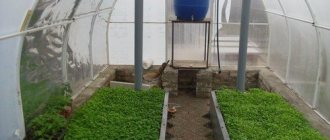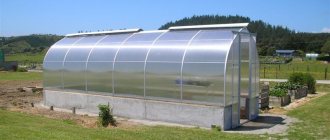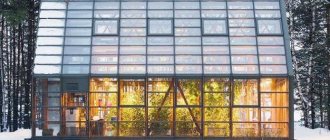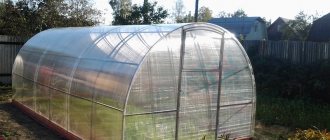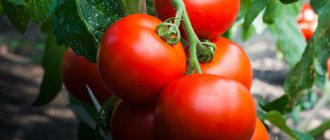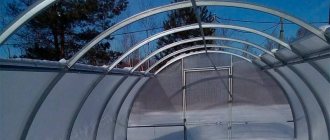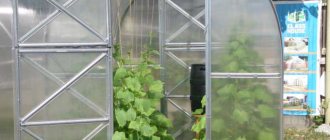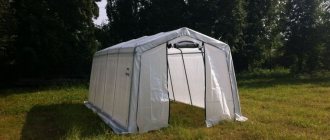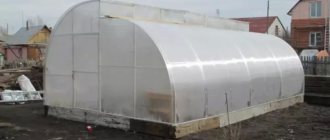Most people have the opinion that Chinese goods are always consumer goods, not of high quality, and their technologies are either far from perfect or borrowed from someone else. Chinese greenhouses completely destroy these stereotypes. Their design is very simple, material investment is minimal, and the results are stunning. With the introduction of these unusual vegetarians into China's agro-industrial complex, it became possible to provide the country's one and a half billion population with cheap fruits and vegetables all year round. Greenhouses from China, having proven their high profitability in practice, began to conquer the world market. Now they are popular in all temperate countries, including Russia.
Principle of operation
Although Chinese greenhouses came to us from China, they have a Russian analogue. Back in the middle of the last century, a simple physics teacher, Alexander Ivanov, came up with heliovegetarians, that is, structures that use the energy of the sun. The Chinese modified this model slightly, leaving the same operating principle. Their first greenhouse appeared in 1978. It works in the same way as Ivanov’s vegetarian, using the free energy of our luminary. In any point of Russia (except for the Far North), the sun shines all year round quite regularly, only in the summer its rays fall on the Earth at an angle close to 90°, and in winter the angle of their incidence decreases to 20-40°. The slight discrepancy in values depends on the latitude of the area. At a small angle of incidence, the rays seem to glide over the surface, and therefore do not give it heat. If you make a greenhouse wall with a slope that allows you to capture all the energy of the winter sun's rays, they will warm this wall in the same way as they warm the ground in summer. This principle is the basis of Chinese vegetarians. It is necessary to additionally heat such structures only in severe frosts.
Chinese greenhouses: description
We are accustomed to greenhouses that are transparent on all sides, because plants should receive as much light as possible. Whether they are arched or house-shaped, it doesn’t matter, the main thing is that all their walls let in the sun’s rays. The Chinese left only one wall transparent, and the rest are built from brick, cinder block, concrete, clay or earth - anything, as long as they are massive. Their thickness is maintained within 1.5-2 meters, depending on the climate of the area. Where winters are relatively warm, for example, in the Krasnodar Territory, walls up to 1-1.5 meters thick can be erected. The outside must be covered with some kind of insulation (foam glass, foamed polymers with a thickness of 150 mm or more, mats with straw). The transparent wall is made with a slope and has the appearance of a semi-arch. For its construction, reinforced film or polycarbonate is used. As you can see, Chinese greenhouses have a somewhat unusual and at the same time simple design. The photo captured one of them from the inside.
If the landscape features of the site allow, such a vegetarian garden can be built into an earthen hill. This option has two significant advantages:
1. The thickness of the earth will protect the greenhouse very well from the cold.
2. Only two side walls will have to be erected, which means significant savings in both money and labor costs.
It is even more economical to attach a greenhouse to the wall of a residential building.
When choosing any option, you must build a utility storage room near one of the sides. The Chinese store tools, fertilizers, chemicals for treating plants and other necessary things in it.
Greenhouses made in China
China is an agricultural country. That is why new Chinese developments in this area are so popular. Greenhouses made in China have become widespread in our country. They are an arched structure in the form of a half, leaning against the wall. If the structure is installed in an open space, then the walls are built specially. The material used to make the walls is clay or brick. Heating in greenhouses is gas or coal. The Chinese supply their greenhouses with a drip irrigation system.
Irrigation is one of the most important conditions for a good harvest. Read about types of irrigation in our material:
One of the most important conditions for obtaining a good harvest is temperature and air humidity. Cool nights in temperate latitudes require closing the greenhouse in the evening and opening it in the morning to get rid of excess accumulated moisture. Permanent residence in a dacha is often impossible, so special mechanisms are used. The best solution to this issue is thermal cylinders filled with machine oil. An increase in air temperature causes the oil to expand inside the cylinder. It puts pressure on the piston, which lifts the greenhouse window. This way the greenhouse is ventilated at the right time.
Infrared lamps are used to heat small greenhouses. More about this:
They have little power, so they are not suitable for large greenhouses. They are installed at a constant distance from the ground; as the plants grow, their height is adjusted. Plants also need additional lighting, especially in winter. Properly selected artificial lighting for greenhouses creates all the conditions for the full development of plants. LED lamps are considered the most efficient. They can operate at low voltage and provide all the necessary spectrum composition.
Features of internal heating
Chinese greenhouses, which use additional heating, are built in regions with harsh winters. For this purpose, use a conventional stove-stove operating on coal or wood, electric or gas heaters. In regions where winter does not get colder than -15°C, it is possible to get by only with solar energy. From dawn to dusk, its rays penetrate the greenhouse, heat the walls and ground, and at night the accumulated heat is released to the air and plants. Some designs provide additional heating without the use of a stove.
It is done like this: plastic pipes with a diameter of 110 mm or more are laid around the perimeter of the greenhouse. They are buried approximately 300 mm into the ground, but so that two ends protrude from the ground from the side of the transparent wall. Warm air enters them from the room. In the opposite wall, where there are also pipe openings, fans are installed that force air to circulate through the system. These devices partially solve the issue of ventilation. As an option, water tanks painted black are installed near the northern wall. The sun warms them all day, and at night they give off heat to the plants.
Features of external heating
In addition to internal heating, Chinese greenhouses are also equipped with external heating. In their vegetarian gardens, the Chinese install a special system that works on the principle of sun awnings. Its design includes a roll of rice husk protective film and a manual or automatic turning mechanism. In the evening, the film is unrolled and covered with a greenhouse, and in the morning it is rolled back into a roll. Reed panels can be used instead of rice husk film. They are made light, because they cover only the transparent wall of greenhouses. In addition, the thickness of the reed panels should not prevent them from being rolled into a roll and retain heat as much as possible.
A storage room attached to the end wall also helps to conserve heat in the greenhouses, because when workers enter it from the street, frosty air penetrates only into this small utility room, without directly reaching the greenhouse.
Interior arrangement
Chinese greenhouses for growing strawberries, tomatoes, and any other vegetables must have a drip irrigation system. A humidity and temperature control system is placed inside the vegetarian containers. Beds are often arranged using agrofibre, which provides additional heating for plant roots. In industrial greenhouses, space is allocated for a compost pit or both plants and animals, for example, pigs, are grown at the same time. These operating features make it possible to obtain organic fertilizers. The Chinese make beds in the south-north direction, with a slight slope from the back wall. It is believed that with this arrangement the soil warms up in the best way. For strawberries, racks in several rows are built on the back wall of the greenhouses. They are placed at such a level that each plant has the opportunity to receive the required amount of light. On the rest of the area they plant low-growing crops.
Tips for the care and operation of the greenhouse
To get the maximum yield using a Chinese greenhouse, you need to follow a number of simple recommendations:
- when constructing a structure, it is better to place it on the southern slopes of the site, so that the soil layer plays the role of a main wall;
- to cover a durable reinforcement base, it is better to use a modern heavy-duty blue-white film, fixing it in a tense state, however, in the northern regions, cellular polycarbonate with a high level of strength would be more appropriate;
- in very snowy winters, the greenhouse covering should be regularly cleared of the snow layer, reducing the pressure on the frame part of the greenhouse and the covering material itself;
- when growing vegetation in the northern regions, you will have to take care of heating, since even the presence of a “rice blanket” is not always able to maintain the required temperature level inside the shelter (potbelly stoves are usually installed on wood or coal in an additional side extension made of brick);
- To moisten the soil in a vegetable garden, you should use drip irrigation or install an irrigation system, but only in combination with good ventilation equipment.
Today, Russian farmers use several basic options for Chinese greenhouse structures, but the most popular are large greenhouses that are relevant in the industrial sector.
We recommend that you learn how to build a greenhouse in the English style.
Thus, when growing a large number of fruit-bearing plants, such shelters pay for themselves quite quickly, but in a small private farm they often turn out to be very expensive, which is why gardeners are looking for more affordable and profitable options. In any case, after studying all the advantages and disadvantages of the described design, you will be able to make a final decision, taking into account your personal capabilities.
Best location
Since Chinese greenhouses use the energy of our luminary, they need to be located on the site so that they can take maximum heat from it. The back wall of the vegetable garden should face north. They make it blind, without a single window and without doors. It can be recessed into an earthen mound or shared with the house. The transparent wall should face south. Two sides are located in the western and eastern directions, respectively. In our country, polycarbonate is most in demand for greenhouses due to its strength. The Chinese prefer to cover their vegetarian dishes with a milky blue super-durable film, the service life of which is 3 years or more. It is believed that it not only evenly disperses light throughout the room, but also transmits only rays with the wavelengths necessary for plants. It is important to find a place for the greenhouse so that its southern wall is not blocked by anything, for example, a high fence or other buildings on the site.
How do the Chinese build greenhouses?
Chinese greenhouses are good because they can be used both in large industrial agricultural complexes and in ordinary household plots .
Their quality has been tested in practice in many regions of Russia, not only in places such as the Krasnodar Territory, but also in places where the climate is quite harsh. In both cases, these garden structures have fully justified themselves.
Industrial greenhouses from China or vegetarian greenhouses are large complexes built using special technology. They have several distinctive features. The basic form of the structure is a rectangular building, placed in a north-south direction and having a flat roof .
How to build a solar vegetarian
Whatever Chinese greenhouses are intended for - for growing cucumbers, tomatoes or cabbage - they are built using the same technology. The ideal option is when a vegetarian farm is attached to a residential building. On the Russian market, these are the types of designs that are mainly sold. The greenhouse components come with a detailed diagram and assembly instructions. You can separately purchase protective film, which is sold by the meter. If you want to build a Chinese greenhouse from scrap materials, it is important to make the correct angle of inclination of the transparent wall, which should be smaller the further north the area is. It is also necessary to provide sufficient ventilation in a homemade vegetarian without compromising its tightness. If you follow all the standards and do not violate technology, a greenhouse you create yourself will be no worse than one purchased from Chinese manufacturers.
Choosing the optimal greenhouse option
Even when taking into account the design features of a particular type of greenhouse, there are still many nuances that require individual clarification. So, when building a Chinese greenhouse, you should pay attention to selecting its optimal dimensions, choosing the most suitable covering, and, of course, figuring out how to assemble the entire structure together.
Choice of coverage
When constructing a Chinese greenhouse on Russian territory, the covering material is usually cellular polycarbonate or a special film in the form of reinforced polyethylene. Compared to polycarbonate, it stretches better and does not crack, although its strength is noticeably lower.
In addition, polycarbonate in most cases will cost a little more. Accordingly, each gardener must decide for himself which characteristics are more important to him.
Size selection
When determining the appropriate size of a greenhouse, you should proceed from the amount of free space for its construction. For effective cultivation of planted crops, the selected area must occupy an area of at least 5×4 m.
The size of the rear wall will depend on the length of the main wall to which the greenhouse itself is attached, and when choosing the appropriate width of the shelter, it is important to focus on the planned number of beds. For industrial growing of plants, buildings up to 10–15 m are often built with a minimum greenhouse width of 2–4 m.
